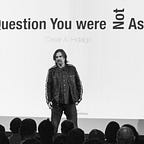Why science wins in the end
It seems like the world has turned against science and that our leaders are choosy about what is the truth. Today, many people reject experts, some reject vaccines, and important global leaders deny climate change and evolution. Is this the end of science as we now it?
The news is that this is not news. For millennia, the majority of the population has rejected science. Nowadays, horoscopes, homeopathy, and esoteric interpretations of eclipses are still prevalent in the media, but in the sixteenth and seventeenth century people were burned or incarcerated for promoting new scientific ideas (like in the case of Giordano Bruno or Galileo Galilei).
So the real question is how has science prevailed in a world that has been keen on rejecting it. For me, the answer simple: the truths that science reveals have an important property that esoteric truths do not have. Scientific truths add, allowing us to advance medicine, communications, transportation, and the comforts of modern life. Esoteric truths, do not add, since you cannot build technology or new additive understanding on top of them.
Of course, the truths of science are not perfect. They are by definition incomplete. This is known in physics as the idea of “effective theories.” Effective theories are theories that are valid for a bounded range of sizes, masses, and energies. Take Newton’s theories of motion and gravitation. Newton theories fail to explain the orbit of mercury, but they work well for the trajectory of tennis balls or ballistic missiles. How accurate are Newton’s theories? Accurate enough to design the engines of the cars we use, or to calculate the structures of the bridges and homes we build.
So when Newton’s theories fail is not because these theories are wrong, but because they have a limited range. They work at the scale of tennis balls, and can even explain the orbit of the moon. But when we try to apply them to the orbit of a celestial body that is too close to a body that is too massive, like in the case of Mercury and the Sun, the theory fails, not because it is wrong, but because it is a bad approximation of reality in such extreme situations. Of course, scientists have since come up with theories that are effective in some of these extreme cases, like Einstein’s theory of gravitation. Einstein’s theory accurately predicts the orbit of Mercury, and also, that of tennis balls.
But Einstein’s triumph did not emerge from a denial of Newton’s theory. It emerged from acknowledging the triumphs of Newton and from a desire to build on them, by creating a theory that expanded these ideas to situations in which Newton’s theory failed. That involved using a new math (differential geometry) that was not developed at the time of Newton. But despite this sophistication, when it comes to tennis courts, the theories of both Einstein and Newton are equivalent. They are equivalent because science adds.
The ability of scientific truths to be added is what gives science its enormous power, and it is what explains why science and technology can progress in a society that often rejects scientific ideas.
Most scientific papers are not major discoveries, but bricks and pebbles that add to the edifice of science. Slowly, science builds edifices thanks to a community of researchers that are careful about every brick. Every nuanced protein interaction explored by a biologist adds to our understanding of specific cellular processes. The understanding of those cellular processes, in turn, adds to our understanding of life, to the point we can cure and prevent diseases. Of course, sometimes science does get things wrong, but sooner or later someone discovers the mistake by adding a new boulder of knowledge that destroys a section of the edifice of science, only to provide it with a more solid foundation.
So the message to my fellow scientific colleagues is to not despair in these moments where the world has turned against reason. Instead of letting political headwinds distract us, we should continue working on our bricks. The edifice of science is an edifice that supports our society and technology, even when the bricks seem modest. Our understanding of electrons, which stems from experiments as simple as those performed by Michael Faraday and J.J. Thomson — experiments that can now be conducted in undergrad and high school labs — underlie the communication networks that allow you to read this message, and also, that empower the millions of science contrarians that now populate our globe. “Alternative” facts and theories can continue to grow, but they will never add in the way science does. You can only build truth with truth. That’s why science is an edifice, and alternative facts and theories are just a pile of rubble.
